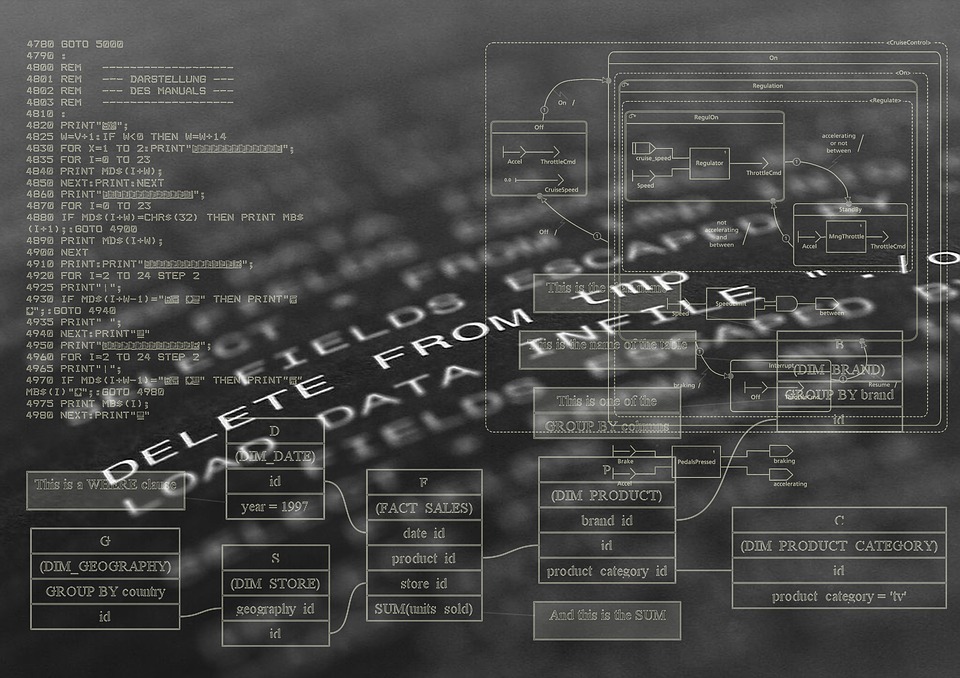Programming is a skill that can be learned by anyone. It’s not limited to those who are born with natural abilities or have access to the best resources in their childhood. If you’re willing to put in the effort and learn how programming is for you.
Did you know that programming is the process of designing, writing, testing, and maintaining the source code of software using a specific programming language? It’s true! And while it may seem like a daunting task, there are plenty of interesting facts about programming that can help make it less intimidating. So if you’re curious to learn more about this fascinating topic, read on for 10 intriguing tidbits about programming. You might be surprised by what you discover!

Table of Contents
10 Interesting Facts About Programming
There are over 700 programming languages
As any programmer knows, there are countless programming languages to choose from. It is over 700. However, some languages are more popular than others. Javascript, Swift, Scala, Python, PHP, Go, Rust, Ruby, and C# are some of the most widely-used languages.
Each language has its own unique benefits and drawbacks. For example, Javascript is a versatile language that can be used for both front-end and back-end development, while Swift is often used for developing iOS applications. While experienced developers may have a preference for one language or another, it is important to be open to learning new languages as they can offer new insights into the world of programming.
Perl, Delphi, and VBA are the most disliked languages
It’s no secret that some programming languages are more popular than others. But what about the languages that are universally despised? According to many online studies, the most disliked programming languages are Perl, Delphi, and VBA. Perl is often criticized for being excessively complex and confusing, while Delphi is said to be difficult to learn and lacking in features. As for VBA, it’s often derided as being slow and inefficient.
So why are these languages so unpopular? It’s likely because they don’t offer the same level of flexibility and power as some of the more popular languages. As a result, they tend to be less versatile and harder to use. As a result, it’s no surprise that they’re also some of the most disliked programming languages.
Programming jobs aren’t all in the technology field
Many people think of coding as a strictly technological skill, but recent studies show that this is not always the case. In fact, according to these studies, around 70% of coding jobs have nothing to do with technology at all. That means that individuals with coding skills can apply those skills to a wide range of topics, from nature studies and geography research to design and film.
Whether you’re an aspiring student or a parent looking for exciting opportunities for your child, learning to code opens up a world of possibilities beyond the realm of technology. Whether you want to pursue a career in one of these non-traditional fields or simply want to expand your horizons, efficient, hands-on coding skills can help take you there.
Ada Lovelace made 1st computer program
When it comes to the history of computer programming, few people are as lauded and renowned as Ada Lovelace.
Ada Lovelace was born in London on December 10, 1815, the daughter of renowned poet Lord Byron. Lord Byron was known for his madness, and Ada’s mother was fearful her daughter would suffer from the same issue. To prevent this, she dedicated Ada to studying mathematics. This decision paid off as Ada Lovelace became one of the world’s first computer programmers.
With her groundbreaking work involving a mechanical computer and her creation of what would become the world’s first algorithm, she revolutionized the way we think about coding and paved the way for generations of computer programmers to come. Her legacy lives on today through the many men and women who continue to push the boundaries of this fascinating field.
Computer programming played a key role in ending World War II
During this tumultuous time, military forces across the globe relied heavily on computer systems to meet their strategic needs. One of the most important figures in this effort was Alan Turing, a British mathematician, and cryptanalyst who contributed greatly to the Allied victory.
Through his groundbreaking research in computer science and artificial intelligence, Turing developed a number of innovative techniques that sped up bandwidth, increased processing power, and enhanced overall system performance. His contributions paved the way for new innovations in warfare that helped drive the Allied advantage throughout the conflict.
Thanks to Turing’s work, computer programming played an instrumental role in helping put an end to World War II and ushering in a new era of modern technology. Today, his legacy continues to inspire countless aspiring programmers around the world. Whether they’re working on cutting-edge projects or contributing to open source efforts, Turing’s impact can still be seen today in every aspect of the field. So even though he died tragically at a young age, his legacy will forever live on as one of history’s most brilliant minds.
The first virus was made in 1986
In 1986, the first computer virus was created by two brothers, Basit and Amjad Farooq Alvi. Dubbed Brain, the virus functioned quite differently from traditional viruses, as it did not corrupt or delete any user files or information.
According to the siblings, who ran a popular computer store in Pakistan, they had created Brain in an effort to prevent their customers from making illegal copies of their software. Despite its benign appearance, however, Brain soon became notorious and raised alarm among security experts around the world.
Today, computer viruses are a major concern for businesses and individuals alike. And while we may never know exactly why the Alvi brothers decided to create Brain all those years ago, one thing is clear: even the simplest of viruses can have far-reaching consequences.
FORTRAN is the first programming language
When most people think of programming languages, they imagine lines of code and complex algorithms. But the very first programming language was much more simple than what we see today. Named FORTRAN, it was developed by a brilliant computer scientist named John Backus in the 1960s.
FORTRAN quickly became a mainstay in the computer science field, providing scientists with a tool to conduct sophisticated tests and experiments on everything from blasting winds to microscopic molecules. Despite evolving into more advanced programming languages over time, FORTRAN is still widely used today, helping researchers tackle complex tasks like weather prediction and chemical simulations with ease.
FORTRAN has been praised for its simple syntax and efficiency. Its code is easy to read and understand, even for those with limited experience in programming. Additionally, FORTRAN compilers are able to produce very efficient machine code, making it a popular choice for performance-critical applications. Despite being over 50 years old, FORTRAN remains an important tool in the computer science arsenal.
Some NASA projects still rely on programming from the 1970s
Despite the advances in computer technology over the past few decades, NASA still relies on some programming techniques from the 1970s. Specifically, the agency uses a programming language called HAL/S, which was created in 1973 for use with onboard computers and other specialized applications.
While HAL/S may seem outdated compared to modern languages like Javascript and C++, it offers several benefits that make it well-suited for use in space exploration. For example, its general nature allows it to be used for a wide range of applications within NASA projects, from controlling space shuttles to communicating with equipment on the International Space Station.
Additionally, its precise and rigorous syntax makes it ideal for working with sensitive data like sensor readings and astronomical calculations, where even the tiniest error could have significant consequences.
Computer software runs in 0 and 1
At the most basic level, computers operate on a system of 1’s and 0’s. This binary code is what gives computers their incredible processing power, as it allows for an endless array of possible combinations. Each individual combination stands for a different instruction or operation, so new instructions can be written and downloaded onto any computer at any time.
Moreover, because there are such a vast number of permutations, it is nearly impossible for software to become obsolete or become incompatible with other systems. So even as technology evolves at lightning speed, computers will remain a cornerstone of our information age thanks to their simple yet powerful binary code.
The first programming bug was a real bug
When most people think of computer bugs, the image of a pesky little insect is not likely to come to mind. And yet, this was the exact scenario that led to the term “bug” being used in computing in the first place. Back in 1947, Grace Hopper, a well-known computer programmer, and military leader came across an actual moth stuck inside one of the relays of an early computing machine. With its unruly wings obstructing its circuitry and causing it to malfunction, this ‘bug’ ultimately came to be known as the very first computer bug and laid the groundwork for our modern understanding of what exactly a computer bug is today.
Today, bugs are seen as one of the most common sources of programming errors, with countless software developers working tirelessly every day to find and correct them before they cause any serious problems. Whether it’s sleeker user interfaces or cutting-edge virtual reality software, computers touch nearly every aspect of our lives in some way or another. And so it’s only fitting that we remember those first pioneers who uncovered not just how these miraculous machines worked – but also how they could go wrong as well. In doing so, they gave us all something valuable to think about next time we find ourselves encountering a pesky little bug of our own.

